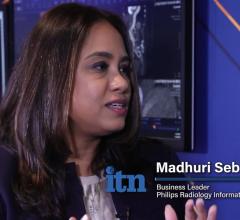
Acuo Technologies will be showcasing its market leading vendor neutral archiving software and latest version of their DICOM Services Grid at RSNA.
Acuo’s solution reportedly eliminates the inefficiency, interoperability issues and single points of failure characteristic of legacy PACS archiving systems. The DICOM Services Grid creates a “search engine” environment to aggregate, federate and virtualize medical imaging assets and related content. Acuo’s DICOM Services Grid offering brings together IHE IT Infrastructure integration profiles and standards based technology for complimenting existing architecture thus creating a workflow enabled infrastructure for managing DICOM data sets.
The DICOM Services Grid integrates natively through DICOM and is able to virtualize the services available from any DICOM device, PACS or archive. These services and resources are then made available to any other application or user in an authorized fashion. Since integration is offered through DICOM, it does not require proprietary hardware or software components to create the Grid, rather every DICOM device on the network can join the Grid without having to change anything about how it currently operates. Finally, since every native node on the Grid is able to integrate via standard protocols, such as HL7 to a HIS/RIS, workflow can be automatically created through clinical policies based upon any meta-data. This workflow can then be extended through image movement, compression, encryption, prefetching, caching, or permanent storage.
The DICOM Service Grid increases productivity by streamlining workflow through integration at every node on the Grid. Images can be cached, compressed, scheduled and prioritized for delivery based upon clinical policies. Legacy systems can join the Grid through the DICOM protocol, lending their services and resources to the overall workload of the enterprise. By using commercial off the shelf components for each native grid node, institutions can readily and cost effectively scale their infrastructure by optimizing workflow at a department, hospital, clinic or enterprise level.


 July 26, 2024
July 26, 2024 








